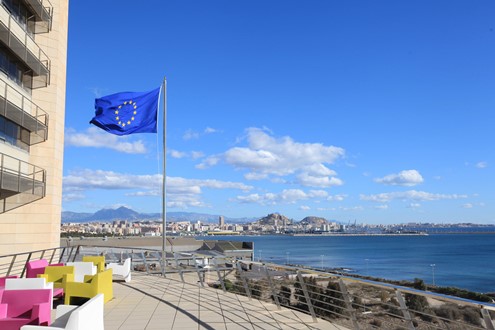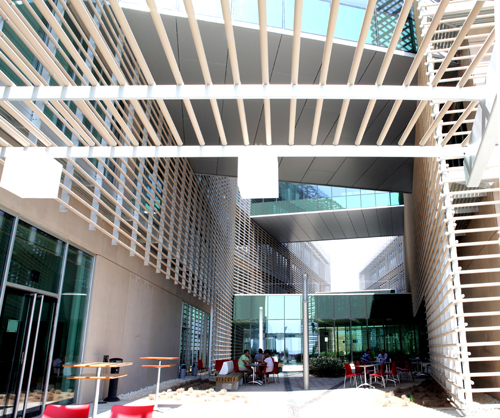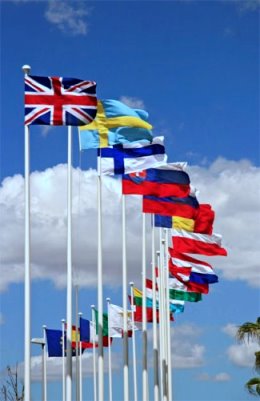Background of the Trade Mark Reform and the EUTM

Already in 2006 the discussion started regarding a review of the functioning of the Community Trade Mark (CTM) and the trade mark system in the European Union (EU) as a whole.
The number of applications have continued to grow, and today some 100 000 are filed on a yearly basis. Measured like this and by the size of the OHIM surplus (approximately 600 million euro), the CTM has clearly been a success. Paradoxically this success, besides the time lapsed, also caused an urge to revise the system. The EU Commission and the Member States of the EU have shown an interest in the handling of the surplus. While the former seems to be interested in how to use the money, the latter focuses more on how to structure the fees of the CTM such that they do affect the national systems as little as possible. The possibility to obtain trade mark protection for three classes for 28 member states is clearly eroding the economy of the national Patent and Trade Mark offices (PTO).
The well-known Max Planck Study on the Overall Functioning of the Trade Mark System in Europe was made public on 3 March 2011. Both in this study and a later communication by the Commission in May 2011 it is confirmed that the trade mark system in Europe has been quite successful. The Communication continues by stating that “stakeholders are increasingly demanding faster, higher quality, more streamlined trade mark registration systems, which are more consistent, user friendly, publicly accessible and technologically up-to-date. To meet these demands, the trade mark system in Europe needs to be modernized and adapted to the internet era.”
According to the Communication the Commission intended to present proposals to revise both the Community Trade Mark Regulation and the Trade Mark Directive during the last quarter of 2011. It lapsed more than a year before they were made public on 27 March 2013. The “legal package” comprises the recast of the 1989 Directive (codified as 2008/95/EC) approximating the laws of the Member States relating to trade marks (the Directive), the revision of the 1994 Regulation (codified as 207/2009/EC) on the Community trade mark (the Regulation), and the revision of the 1995 Commission Regulation (2869/95) on the fees payable to the Office for Harmonization in the Internal Market (OHIM) (the Fee Regulation).
The European Parliament (the Parliament) approved on 25 February 2014 its amended version of the proposals. The Council of the European Union (the Council) made available its proposal on 18 July 2014. A trialogue, i.e. discussions between the Commission, Parliament and Council, has resulted in a political agreement on the texts in April 2015, which texts have received the approval by the Committee of Permanent Representatives, Coreper, on 10 June. The Regulation and the Directive were published on 23 and 24 December 2015 in the Official Journal.

The Dual System
The national trade mark systems in the EU coexist with the CTM. In the Max Planck Study it is clearly stated that “User organizations agree that the coexistence of CTMs and national trade mark rights is fundamental and necessary for the efficient functioning of a trade mark system capable of meeting the needs of companies of different sizes, markets and geographical needs, and that it should therefore be maintained.” This was also the starting point for the renewed efforts to create a community wide trade mark system in the 1970s.
The very statement in the Memorandum on the Creation of an EEC Trade Mark in 1976 that the only way to solve the conflict between the free movement of goods and the national trade mark systems was to abolish the latter, apparently triggered the renewed effort to create the CTM and also guaranteed the coexistence between the two systems. Interesting to note, is the wording in preamble (5) of the final text where it is stated that “… the Community trade mark system … has become a successful and viable complement and alternative to the protection of trade marks at the level of the Member States.” I think thus that we have moved away from the statement “The Community law relating to trade marks nevertheless does not replace the laws of the Member states on trade marks.” in preamble (6) of the CTMR, which is an indication of in which direction we are going.
The Regulation and Administration of the EUTM system
The Community Trade Mark Regulation (CTMR) was enacted in 1994, but it became operational from 1 April 1996. Filing of registrations was possible from the beginning of that year. While the TMD strives at harmonizing the laws of the Member States in order to make available and smooth the free movement of goods and services, the CTMR establishes a unitary right extending throughout the whole territory of the EU. It has equal effect in the whole of the Community and being e.g. revoked or declared invalid, also concerns the total territory of the same.
Changing the name of the CTM to the European Union trade mark (EUTM) is of course in line with the Lisbon Treaty. Interestingly enough the Commission suggested the CTM to be renamed the European trade mark, but this was quickly “shot down” by, among others, the user organizations. It was pointed out that not all European countries belong to EU.
Name and governance of the Office
The administration of the Community Trade Mark system is carried out by OHIM. In its Mission statement it is declared that its task is “… to manage the Community Trade Mark and Community Design registration systems. In order to do so, the Office carries out examination, registration, opposition and cancellation procedures for Community Trade Marks… All decisions adversely affecting a party to proceedings can be appealed before the Boards of Appeal of the Office.”
Some user organizations have namely voiced a slight concern that by extending its activities, such as to the Observatory and the Mediation Center, and maybe further, the Office might lose sight of its main tasks.
OHIMs position as an administratively and financially autonomous body has been questioned by the Commission, although being supervised by the latter. The Commission would have preferred to change its status and equalize it with all the other EU agencies. This is to some extent reflected in the Commission proposal to rename OHIM to the EU Trade Marks and Designs Agency. This was later changed by the Parliament to the European Union Intellectual Property Agency, while the Council, representing the Members States, has opted for status quo, i.e. no change. A change will of course be costly. The former proposal has the additional draw back that it does not cover all current activities performed by OHIM. The existing name is not really very illuminative and does not indicate for new users what the main tasks of the Office are.
The new name will be the European Union Intellectual Property Office. One could argue that it is a compromise between the Parliament and Council proposals.
The Commission representation on the Administrative Board, now to be called the Management Board, and the naming of the President of the Office, have been discussed. The Commission wanted two representatives to the Board, the Council changed it to one in its proposal. The Council wanted also to maintain its right to appoint the President from a list of candidates proposed by the Administrative Board. In the Commission proposal the Administrative Board was replaced by the Commission itself.
According to EUTMR, the Commission will be represented by two persons and the European Parliament by one. The President will be renamed the Executive Director, who in its turn shall be appointed by the Council by simple majority. It can be safely argued that this solution is a compromise between the three Union bodies.
How to Manage the Surplus?

While the Commission in its proposal wanted to set aside by maximum 10 % of OHIMs annual income for grants to the IP Offices of the Member States for participation in co-operation activities, the Parliament increased the amount to maximum 20 %. The Council in its turn changed this to a minimum of 10 % and added a proposal regarding a minimum of 5 % being paid as compensation to the Member States for certain activities related to the EU Trade Mark System.
According to the final text in the EUTMR, the overall offsetting of the costs, i.e. those incurred by the intellectual property offices of the member states, including the Benelux Office, in relation to the EU trade mark system shall correspond to 5 % of the yearly revenue of the Office. This can under certain circumstances be increased to 10 %, assuming a surplus of course. If a substantive surplus, is generated during five consecutive years the Budget Committee of the Office can decide by 2/3 majority on the transfer to the budget of the EU. This is to be calculated from the entry into force of the EUTMR.
While there has been a consensus, that an application shall cover one class only, the debate has concerned the mechanism for setting the fees and amount to be paid for additional classes. Since the EUTMR inserted the fees as an annex to the regulation a change has to be made through the normal legislative procedure, which of course means that the Council, and thus the Member States, has a role to play. The Commission wanted a possible change to take place through delegated acts, thus reserving this task for itself.
According to the EUTMR the basic fee for a European Union mark amounts to 1000 euro. If applied for electronically it is set at 850 euro. Both amounts correspond to the existing situation with the exception of course that today one fee covers three classes. For the second class of goods and services an additional 50 euro has to be paid and, for each additional class 150 euro. Even with an additional fee for the second, third, etc. class, the overall cost for registering a EUTM is low compared with the fee for a national registration, which of course explains the interest of the Member States regarding this issue. The renewal fees are the same as the above mentioned.
Registration
The exclusive right provided for by a CTM is always based on registration. Protection cannot be obtained by establishment, even less by starting to use a trade mark. According to the CTMR an application for a CTM shall at the choice of the applicant, either be filed at the Office, i.e. OHIM, or at the central industrial property office of a Member State. The Member States are not deprived of the right to continue to protect established trade marks.
It is established in the EUTMR that an application for a EU trade mark shall be filed exclusively at the Office. This is argued by noting that there has been a gradual decline of filings of CTMs at the intellectual property offices of the Member States. With the introduction of electronic filing it is of course no surprise, that the number of CTM applications at the local offices today is insignificant.

Requirements for protection
The CTMR a CTM may consist of any sign capable of being represented graphically, particularly words, including personal names, designs, letters, numerals, the shape of goods or of their packaging, provided that such signs are capable of distinguishing the goods or services of one undertaking from those of other undertakings.
In the EUTMR the requirement of graphical representation is abolished. Instead the wording “in a manner which enables the competent authorities and the public to determine the clear and precise subject matter of the protection afforded to its proprietor.” is used. This is motivated by allowing more flexibility while ensuring greater legal certainty. A sign can thus be represented in any appropriate form using generally available technology as long as the representation is clear, precise, self-contained, easily accessible, intelligible, durable and objective.
This suggestion is welcomed due to an assumption that this will lead to more comprehensive protection of different kinds of trade marks. At the same time, a wish is expressed that the Sieckmann-criteria adopted in the final proposal be elaborated in order to avoid that the public will be confronted with uncertainty.
In addition a EUTM cannot be registered if it is devoid of any distinctive character, if it consists exclusively of a shape or another characteristic which results from the nature of the goods themselves, the shape or another characteristic of goods which is necessary to obtain a technical result or the shape or another characteristic which gives substantial value to the goods. The Office considers, these so called absolute hinders ex officio, but the relative grounds, such as risk of confusion with an earlier mark, upon opposition of the proprietor of the earlier mark only.
In quite a few Member States the local offices do also consider relative grounds of refusal ex officio. The Commission proposed to abolish this practice by prohibiting it. In the final proposal it has been reintroduced by allowing Member States to decide for themselves.
Limitations of protection
The CTMR allows for certain actions to be taken by third parties in the course of trade even if they concern use of a protected sign. The limitations concern use of one´s name or address, of signs or indications in a descriptive meaning and of a sign where this is necessary to indicate the purpose, provided that this is done in accordance with honest practice in industrial and commercial manners.
When the TMD was enacted the Commission and the Council issued a Joint Statement declaring that names meant only names of natural persons. In a decision made by the CJEU regarding the question whether a trade name conflicting with a prior trade mark could nevertheless be used in commerce, the court declared that such a statement, meaning the one issued by the Commission and Council, is not legally binding and that the wording in the TMD does not reflect any restriction in the meaning of “name”.
In the final text the so called own name defense for companies is abolished and it is emphasized that it concerns one´s own personal name only. The concept “natural person” is used. According to the EUTMR this is putting trade names and trade marks on an equal footing.
Loss of protection
Where trade mark rights are obtained through registration, as is the case with respect to the CTM, they cease either by a declaration to the relevant office, i.e. OHIM, or by not renewing the registration, which is in force for 10 years from the date of filing the application.
The CTM may also be cancelled, i.e. the protection lost, due to the mark being revoked or declared invalid. The CTM is liable to revocation if it has not been put to genuine use in the Community, if the trade mark has become generic or if the mark is misleading the public.

These provisions have basically stood the test of time and not very much has been said about changing or altering them. There is one exception and that is the concept of genuine use and its territorial extension or geographical scope. Instead of leaving the issue to be decided case by case it has been argued that by establishing some legislative criteria in this respect the matter would be clarified and become more predictable. It is worth noticing that the Max Planck Study proposes to leave Article 15 in the CTMR unchanged and the territorial extent of use to be developed by the courts. According to the Study it should be clarified in the Preamble of the CTMR that political boundaries do not constitute valid criteria in determining genuine use. This does not mean, according to the Study, that the dimension of the EU should be excluded by the courts when making the assessment.
This provision about genuine use has been left intact by the EUTMR.
Next steps
There is a risk that by delving into the details of the EU Trade Mark Reform, one loses sight of the overall aim and direction. I think it can be suggested, that the Commission has, by changing some of the existing provisions, strived to simplify, streamline and modernize the system. This is reflected in its suggestion to rename the Office, to handle the surplus, to decide itself, through delegated acts, on the size of fees, to abolish the requirement on graphical representation, to abolish ex officio examination of relative grounds in the Member States, etc. The Commission wants, I think, to make OHIM an agency among the other EU agencies, focusing on its main tasks, registering trade marks and designs, and to use the CTM procedures as a bench mark for the National Systems. This would, the Commission believes, serve the integration of the internal market and thus the EU economy, best.
This is of course no surprise, taking into account the task of the Commission, i.e. to be the “guardian” of the internal market. The proposals described above, by the Parliament and particularly the Council as well as the final text show, that EU is not only the “playing ground” for the Commission, but that it is a construction characterized by internal tensions between the Commission on the one hand, and the Council, i.e. Member States, on the other. Although having obtained extended powers, the Parliament is to be found somewhere in the middle, leaning on the expertise of the Commission and the pressure from the Member States.
We will have a reform of the EU Trade Mark System coming into force on 23 March 2016. The final outcome of the Regulation, the EUTMR, and also of the Directive, is a clearly modified version of the Commission proposal from March 2013. This is of course positive news for the National Systems and, most likely, the SMEs in the Member States. Taking into account the statement made by the Commission in May 2011, the change of the CTMR could have gone quite much further.
Max Oker-Blom
Adjunct Professor
Hanken School of Economics
max.oker-blom(at)hanken.fi
Read also: EU Trademark Reform and Scope of Protection
If you are interested in the relevant sources concerning this article, please, contact the author.




